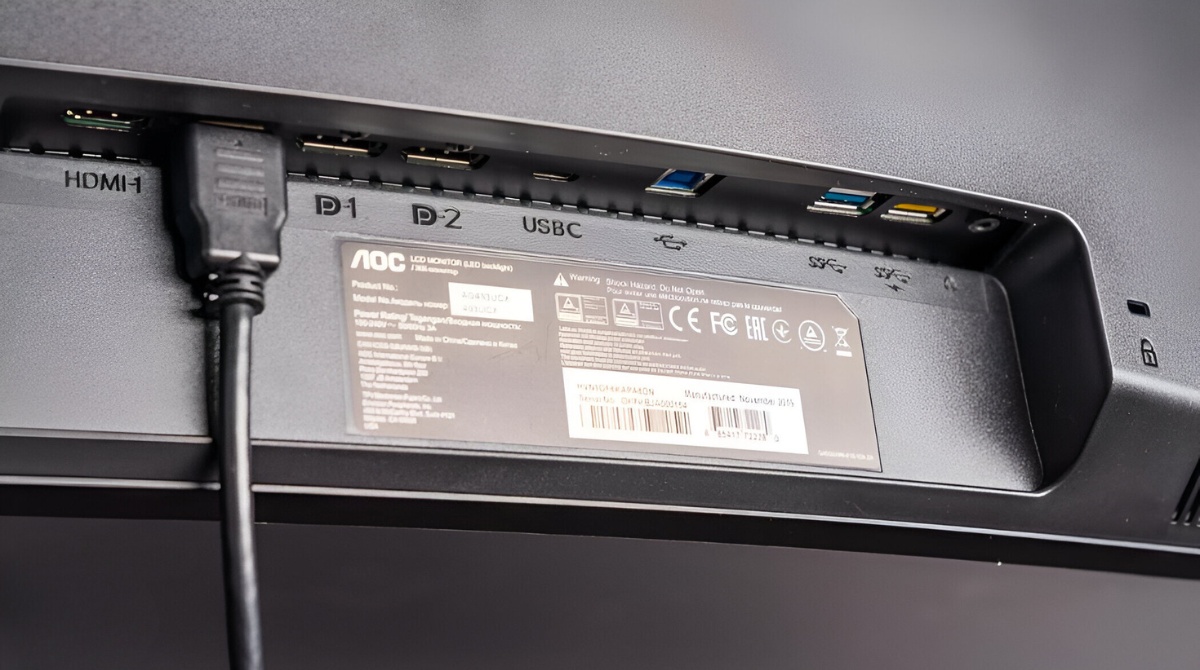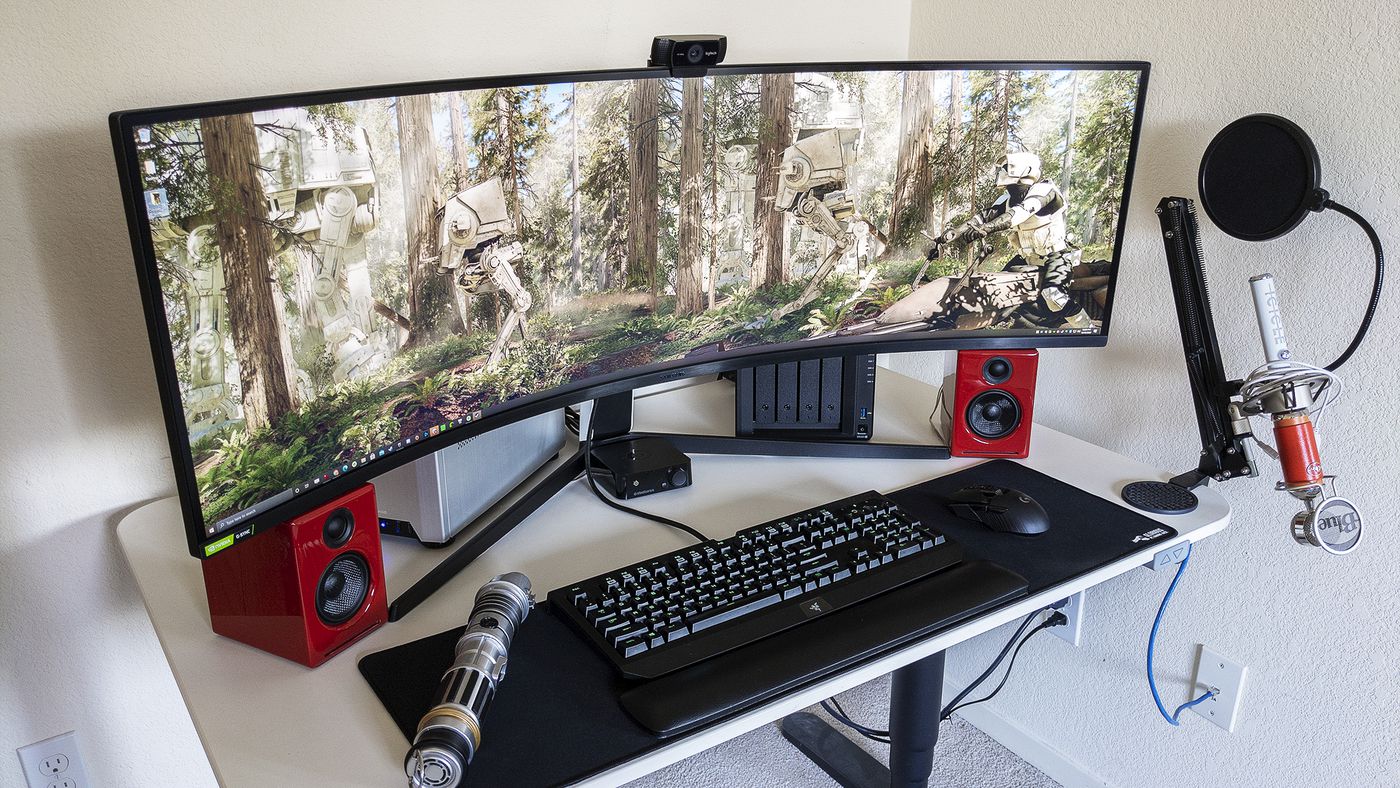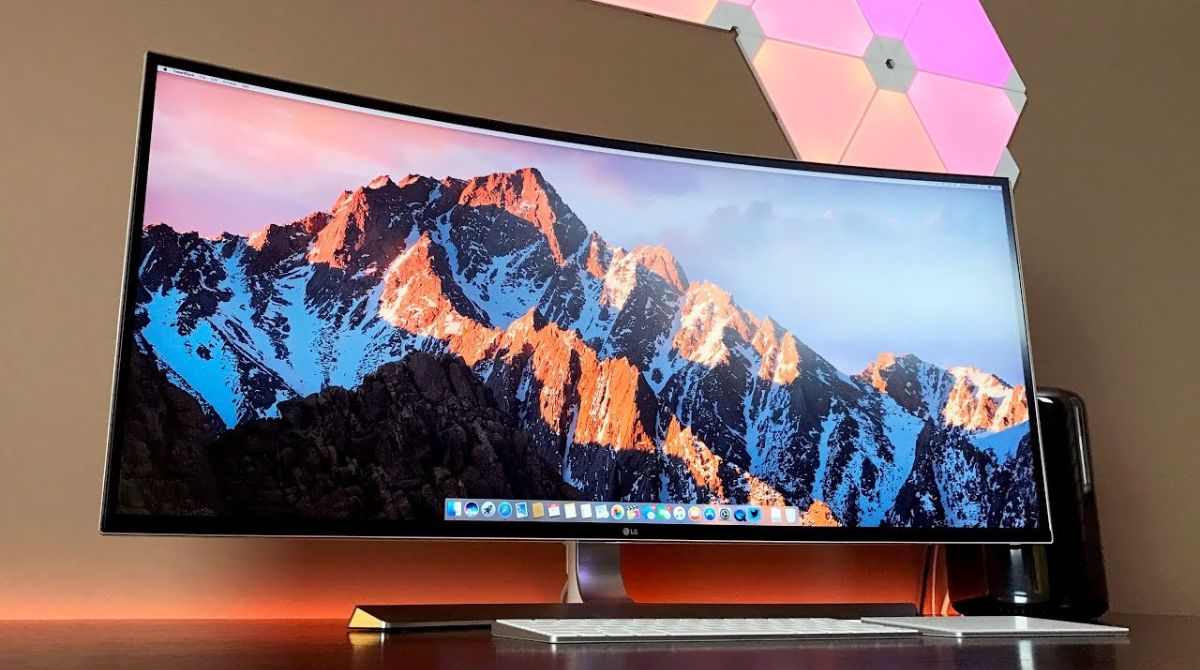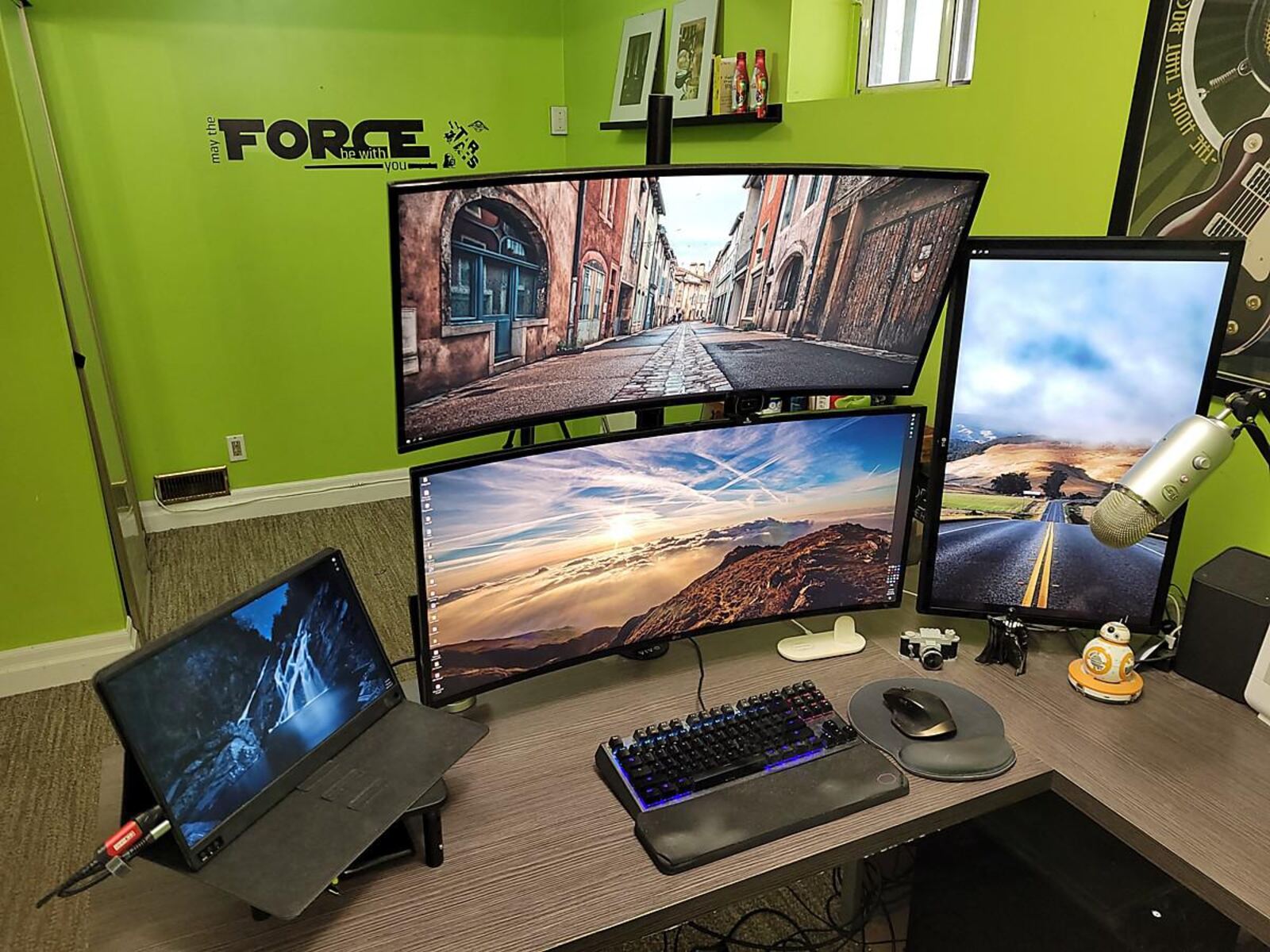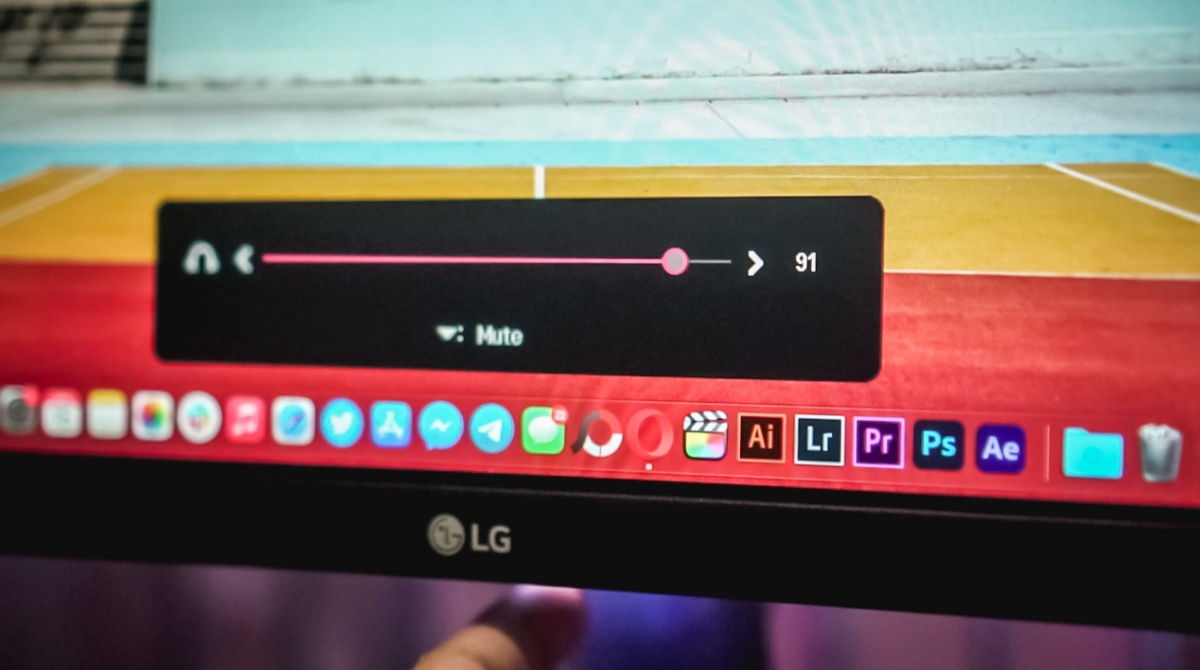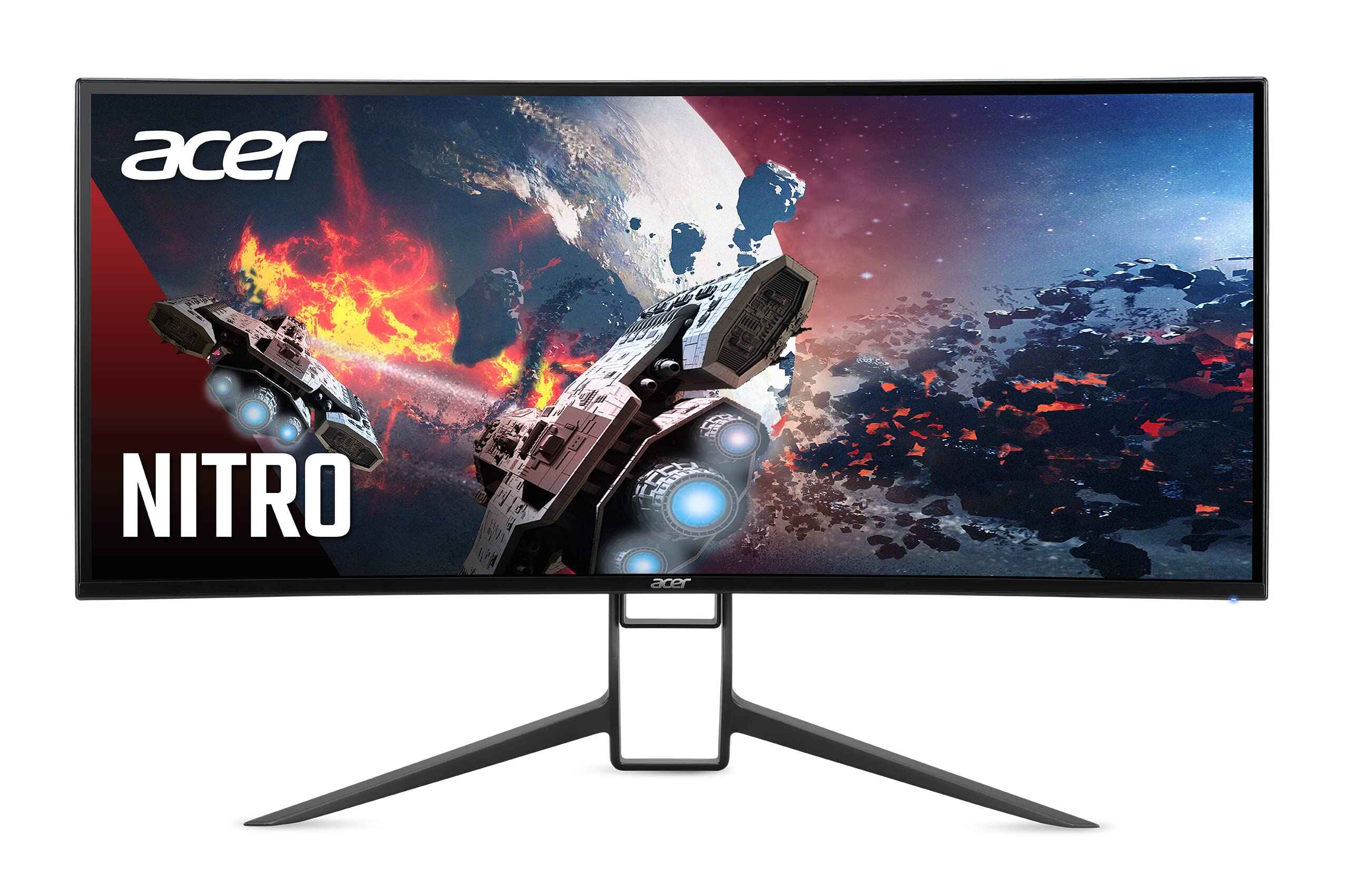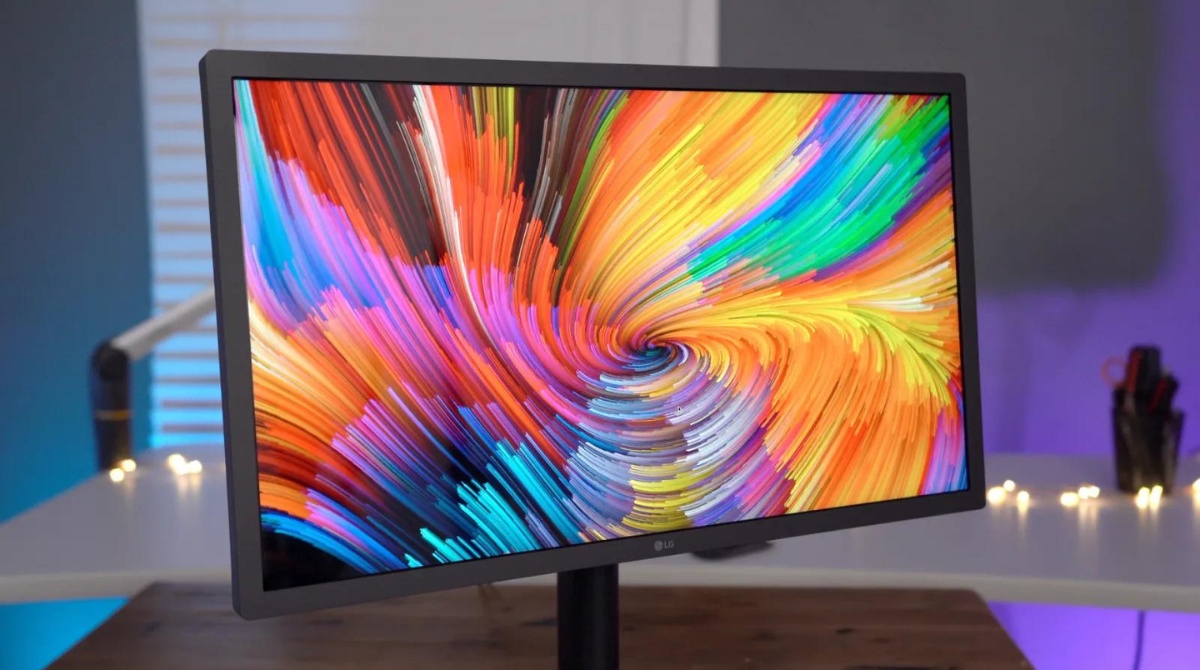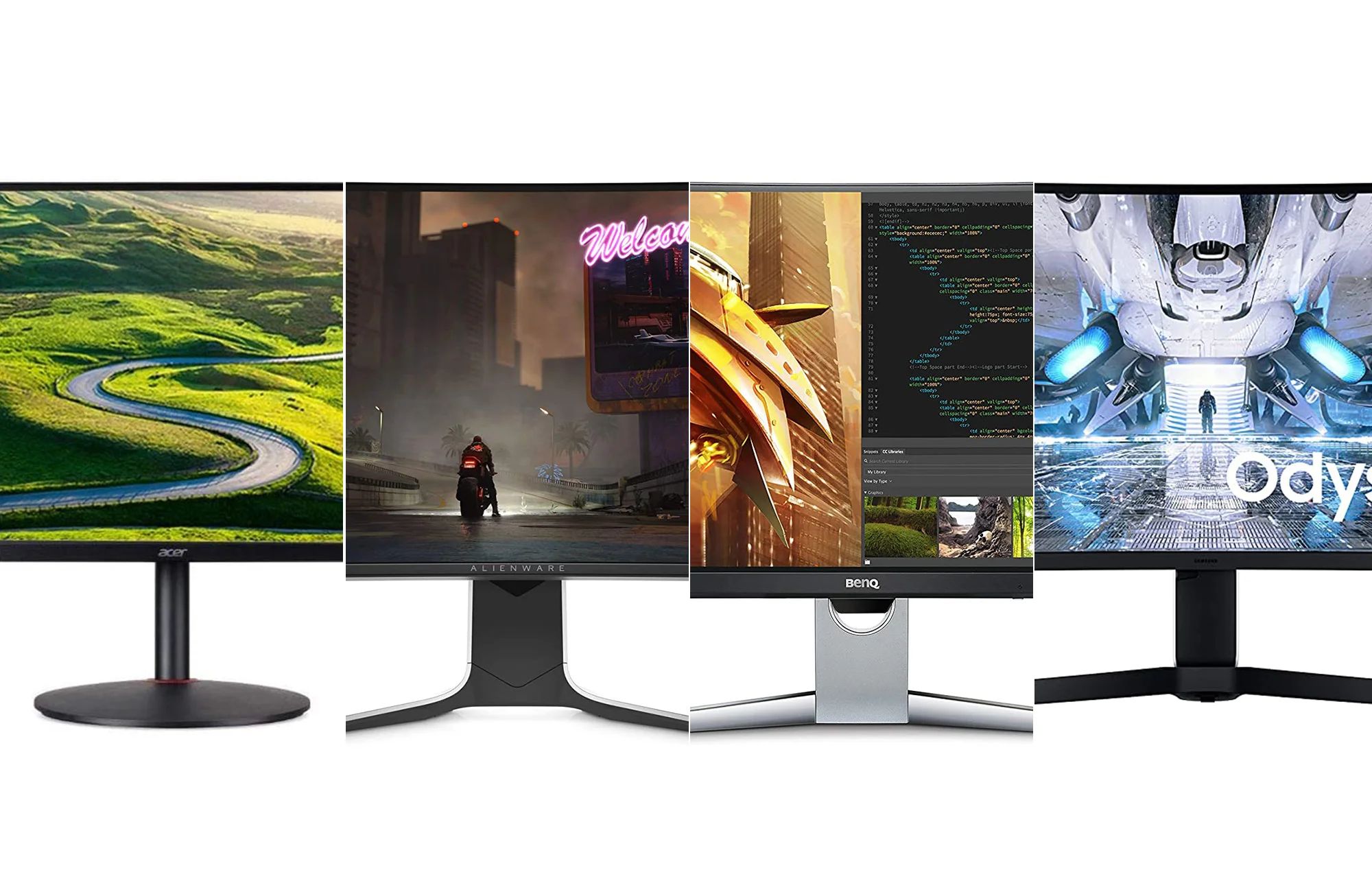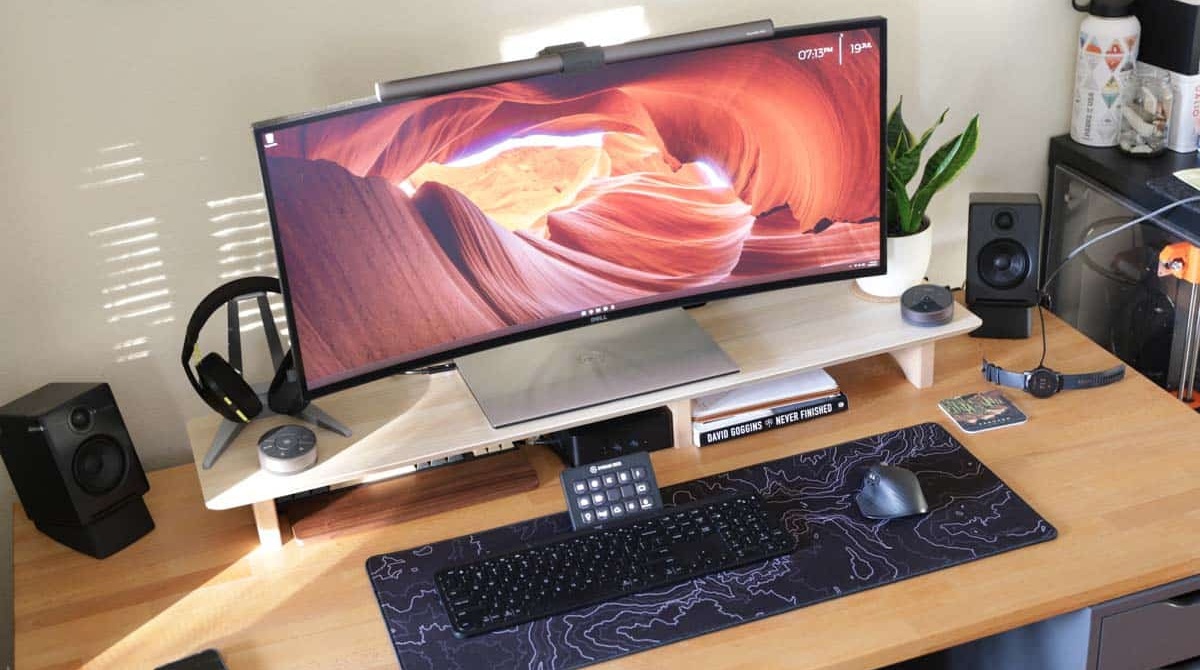Introduction
Welcome to the world of ultrawide monitors! These wide-screen beauties are revolutionizing the way we work, game, and consume media. With their immersive display and expanded real estate, ultrawide monitors provide a truly captivating experience.
However, like any technological advancement, using an ultrawide monitor requires the right equipment. And one essential component for connecting your ultrawide monitor is an HDMI cable. But with so many options available, finding the right HDMI cable for your ultrawide monitor can seem like a daunting task.
In this article, we will guide you through the process of selecting the perfect HDMI cable for your ultrawide monitor. We will explore the different factors you need to consider, such as HDMI versions, cable length, bandwidth, cable materials, and HDMI standards. By understanding these factors, you will be able to make an informed decision and maximize the potential of your ultrawide monitor setup.
So, whether you’re a professional seeking increased productivity, an avid gamer looking for a more immersive gaming experience, or simply someone who enjoys multimedia content on a larger screen, this guide will help you choose the right HDMI cable for your ultrawide monitor. Let’s dive in and explore the fascinating world of ultrawide monitors and HDMI cables!
Understanding HDMI Cables
Before we delve into the specifics of choosing an HDMI cable for your ultrawide monitor, let’s first understand what HDMI cables are and how they work.
HDMI stands for High-Definition Multimedia Interface, and it is the standard for transmitting high-definition audio and video signals from one device to another. HDMI cables are designed to carry digital signals and provide a seamless connection between your ultrawide monitor and the source device, such as a computer, gaming console, or media player.
One of the key advantages of HDMI cables is their ability to transmit both audio and video signals in a single cable, eliminating the need for separate audio and video cables. This makes setup simple and convenient, reducing cable clutter and ensuring a hassle-free experience.
HDMI cables come in different versions, each with its own capabilities and features. These versions determine the maximum resolution, refresh rate, color depth, and audio formats that the cable can support. The most commonly used HDMI versions today are HDMI 1.4, HDMI 2.0, and the latest HDMI 2.1.
HDMI cables also have different connector types, including Type A (standard HDMI), Type C (mini HDMI), and Type D (micro HDMI). The type of connector you need will depend on the ports available on your ultrawide monitor and the source device you are connecting it to.
It is important to note that HDMI cables are backward compatible, which means you can use a newer HDMI cable with an older HDMI version (e.g., using an HDMI 2.1 cable with an HDMI 2.0 port). However, the cable can only support the capabilities of the older HDMI version in such cases.
Now that we have a basic understanding of HDMI cables, let’s explore the factors you should consider when choosing an HDMI cable for your ultrawide monitor setup.
Factors to Consider When Choosing an HDMI Cable for Ultrawide Monitors
When selecting an HDMI cable for your ultrawide monitor, there are several factors you need to take into account to ensure optimal performance and compatibility. Let’s explore these factors in detail:
1. HDMI Version: Consider the HDMI version supported by your ultrawide monitor and the desired resolution and refresh rate. Higher HDMI versions, such as HDMI 2.0 and HDMI 2.1, offer increased bandwidth and support for higher resolutions and refresh rates. Ensure that the HDMI version of the cable you choose aligns with your ultrawide monitor’s capabilities.
2. Cable Length: Determine the distance between your ultrawide monitor and the source device. Choose an HDMI cable with an appropriate length to reach your desired setup. Avoid using excessively long cables, as they can result in signal degradation. Additionally, longer cables may require higher quality materials to maintain signal integrity.
3. Bandwidth: Consider the bandwidth requirements of your ultrawide monitor. Higher resolutions, higher refresh rates, and HDR content demand more bandwidth. Ensure that the HDMI cable you choose can handle the necessary data transfer rates to deliver a smooth and high-quality viewing experience.
4. Cable Materials: Pay attention to the quality of the cable itself. Look for cables with high-quality materials, such as gold-plated connectors, oxygen-free copper conductors, and shielding to minimize interference and enhance signal transmission. These materials can help deliver a more reliable and stable connection.
5. HDMI Standards: Consider any additional features or standards that may be relevant to your ultrawide monitor setup. Features like ARC (Audio Return Channel), Ethernet support, and HDMI-CEC (Consumer Electronics Control) can provide added functionality and convenience.
By considering these factors, you can narrow down your options and choose an HDMI cable that is best suited for your ultrawide monitor setup. Remember, selecting the right HDMI cable will ensure that you can fully unleash the potential of your ultrawide monitor and enjoy a seamless multimedia experience.
HDMI Version: Which One is Right for Your Ultrawide Monitor?
When it comes to selecting the right HDMI version for your ultrawide monitor, it’s essential to consider the capabilities and requirements of both your monitor and the devices you will be connecting to it.
The HDMI version determines the maximum resolution, refresh rate, color depth, and audio formats that the cable can support. Let’s take a closer look at the different HDMI versions and their features:
1. HDMI 1.4: This version supports resolutions up to 4K at 30Hz and provides basic 3D support. It is suitable for most standard ultrawide monitors with a 60Hz refresh rate. However, if you plan to use your ultrawide monitor for gaming or high-performance applications, you may want to consider a higher HDMI version.
2. HDMI 2.0: HDMI 2.0 is an improvement over HDMI 1.4 and supports higher resolutions and refresh rates. It can handle 4K resolutions at 60Hz and is ideal for gamers and content creators who need smooth and immersive visuals. If your ultrawide monitor has a high refresh rate of 100Hz or above, HDMI 2.0 is recommended to make full use of the monitor’s capabilities.
3. HDMI 2.1: The latest HDMI version, HDMI 2.1, introduces significant advancements in terms of bandwidth and features. It supports resolutions up to 8K at 60Hz and 4K at 120Hz. HDMI 2.1 also supports dynamic HDR, variable refresh rates (VRR), and enhanced audio return channel (eARC). If you have a cutting-edge ultrawide monitor with advanced features and want to future-proof your setup, HDMI 2.1 is the way to go.
When choosing the right HDMI version for your ultrawide monitor, consider the resolution and refresh rate that you want to achieve, as well as the compatibility with your devices. If your devices support a higher HDMI version, it is generally recommended to match the HDMI version between the monitor and the device for optimal performance.
Keep in mind that even if your ultrawide monitor supports a higher HDMI version, it is still backward compatible with lower HDMI versions. This means you can use an HDMI 1.4 or HDMI 2.0 cable with an HDMI 2.1 port, but you will be limited to the capabilities of the lower HDMI version.
Choosing the right HDMI version ensures that you can fully utilize the features and capabilities of your ultrawide monitor, providing you with a stunning visual experience and seamless connectivity with your devices.
Cable Length: Finding the Perfect Fit for Your Ultrawide Monitor Setup
When it comes to selecting an HDMI cable for your ultrawide monitor, the cable length is a crucial factor to consider. Choosing the right cable length ensures that you can set up your monitor in the desired location without compromising the signal quality. Let’s explore how to find the perfect fit for your ultrawide monitor setup.
First, measure the distance between your ultrawide monitor and the device you will be connecting it to. Consider any additional factors such as the placement of your computer tower or media player. This will give you an idea of the cable length you need.
It’s often tempting to choose a longer cable to allow for flexibility and future-proofing. However, using excessively long cables can lead to signal degradation, resulting in reduced video quality or even a loss of signal altogether. It’s best to choose a cable length that meets your current needs without excessive extra length.
On the other hand, choosing a cable that is too short can limit your flexibility in arranging your ultrawide monitor setup. Ensure that the cable length allows for easy cable management and positioning without placing strain on the connection or causing the cable to be taut.
When selecting an HDMI cable, it’s essential to consider the cable’s materials and construction, as longer cables require better materials to maintain signal integrity over the distance. Look for cables with high-quality shielding and conductors, as well as connectors that provide a secure and reliable connection.
If you need to cover a significant distance, you can also consider using cable management solutions such as cable raceways or in-wall conduits to keep the cables organized and protected.
Remember to factor in any potential obstacles or bends in the cable’s path, as these can affect signal quality. If you need to route the cable through tight spaces or around corners, consider using cables with a flexible design that can accommodate those needs.
Overall, the perfect cable length for your ultrawide monitor setup strikes a balance between meeting your current needs and providing flexibility for future adjustments. Measure the distance, consider potential obstacles, and select a cable length that allows for a clean and efficient setup without compromising the signal quality.
Taking the time to choose the right cable length ensures that you can enjoy a seamless and reliable connection between your ultrawide monitor and your source device, providing you with an exceptional viewing experience.
Bandwidth: Ensuring Optimal Performance of Your Ultrawide Monitor
When it comes to selecting an HDMI cable for your ultrawide monitor, considering the bandwidth capabilities of the cable is crucial for ensuring optimal performance and visual quality. Bandwidth refers to the amount of data that can be transmitted through the cable per second, measured in gigabits per second (Gbps).
Ultrawide monitors often have higher resolutions, higher refresh rates, and support for advanced features like High Dynamic Range (HDR). To deliver these rich visuals without compromising quality, it’s essential to choose an HDMI cable with sufficient bandwidth.
Different HDMI versions offer varying levels of bandwidth. For example:
– HDMI 1.4 supports up to 10.2 Gbps, which is suitable for most standard ultrawide monitors with resolutions up to 4K at 30Hz.
– HDMI 2.0 increases the bandwidth to 18 Gbps, allowing for higher resolutions, such as 4K at 60Hz, and smoother motion in gaming and video playback on your ultrawide monitor.
– HDMI 2.1 provides an impressive boost with a bandwidth of up to 48 Gbps. This allows for stunning visuals at resolutions up to 8K and higher refresh rates, making it ideal for future-proofing your ultrawide monitor setup.
To ensure you choose a cable with sufficient bandwidth, consider the resolution and refresh rate of your ultrawide monitor, as well as any advanced features you plan to utilize. Higher resolutions and refresh rates require more bandwidth to deliver a smooth and immersive viewing experience.
It’s important to note that using a cable with insufficient bandwidth can lead to limited resolution, lower refresh rates, or even a complete loss of signal. However, using a cable with higher bandwidth than what is necessary does not negatively impact performance. In fact, it may provide more headroom for future upgrades or changes in your ultrawide monitor setup.
When selecting an HDMI cable, look for cables that are labeled as “High Speed” or “Ultra High Speed,” as these are designed to handle the increased bandwidth requirements of higher resolutions and refresh rates. Additionally, ensure that the HDMI version of the cable matches the capabilities of your ultrawide monitor and source devices for optimal compatibility.
By choosing an HDMI cable with sufficient bandwidth, you can fully unlock the potential of your ultrawide monitor and enjoy stunning visuals, smooth motion, and an immersive viewing experience.
Cable Materials: Does It Really Make a Difference?
When choosing an HDMI cable for your ultrawide monitor, you may come across different cable materials advertised by manufacturers. But does the choice of cable materials really make a difference in performance? Let’s explore the impact of cable materials on HDMI cable quality and functionality.
While it’s true that the main purpose of an HDMI cable is to transmit digital signals, the quality of the materials used can affect signal integrity, durability, and overall performance. Here are some key cable materials to consider:
1. Connectors: Look for HDMI cables with sturdy connectors. Gold-plated connectors are often preferred as they provide better conductivity and corrosion resistance. They ensure a secure and reliable connection between your ultrawide monitor and the source device.
2. Conductors: High-quality HDMI cables usually feature oxygen-free copper (OFC) conductors. OFC conductors provide better signal transmission and minimize the risk of data loss or interference. They ensure a clean and accurate signal transfer, resulting in crisp and vivid visuals on your ultrawide monitor.
3. Shielding: Cables with effective shielding help protect against electromagnetic interference (EMI) and radio frequency interference (RFI), which can degrade the signal quality. Look for HDMI cables with multiple layers of shielding, such as foil and braided shielding, to ensure a robust and interference-free signal transmission.
4. Jacket Material: The outer jacket of the cable plays a role in protecting the internal components and providing flexibility. Look for HDMI cables with durable and flexible jacket materials, such as PVC or nylon braided jackets. These materials ensure longevity, easy handling, and resistance to wear and tear.
While the choice of cable materials can contribute to signal quality, it’s important to note that the impact may be more noticeable with longer cable lengths or when dealing with complex ultrawide monitor setups. For shorter cable lengths, the difference in performance may be negligible for most users.
It’s worth mentioning that certifications and quality control standards, such as HDMI Premium Certification or HDMI Authorized Test Center (ATC) certification, can help ensure that the HDMI cable meets certain quality requirements. These certifications provide reassurance that the cable has undergone rigorous testing and meets recognized industry standards.
Ultimately, while cable materials can make a difference in performance and longevity, it’s important to strike a balance between quality and affordability. Consider your specific needs, budget, and the length of the cable required for your ultrawide monitor setup. Choosing a well-constructed HDMI cable with reliable materials can provide peace of mind and enhance your overall viewing experience.
HDMI Standards: How to Maximize Your Ultrawide Monitor’s Potential
When selecting an HDMI cable for your ultrawide monitor, it’s crucial to consider the HDMI standards and features that can enhance your viewing experience and maximize your monitor’s potential. HDMI standards go beyond just transmitting audio and video signals and offer additional functionalities. Let’s explore these standards and how they can benefit your ultrawide monitor setup:
1. Audio Return Channel (ARC): HDMI cables with ARC support allow the transmission of audio from your ultrawide monitor back to your audio system without needing a separate audio cable. This streamlines your setup and eliminates the need for additional connections, providing a cleaner and more efficient audio solution.
2. HDMI Ethernet Channel (HEC): HEC enables high-speed networking capabilities over HDMI cables. This allows you to share an internet connection between your ultrawide monitor and other HDMI-enabled devices, like streaming boxes or gaming consoles, using a single HDMI cable. HEC is especially useful if your ultrawide monitor is equipped with smart features or if you want to connect to online content seamlessly.
3. HDMI-CEC (Consumer Electronics Control): HDMI-CEC enables control of multiple HDMI-connected devices with a single remote. This means you can control your ultrawide monitor and other HDMI devices, like Blu-ray players or sound systems, using a single remote control. HDMI-CEC simplifies your setup and provides a more streamlined and user-friendly experience.
4. HDMI Deep Color: Deep Color support allows for a wider range of colors and more accurate color representation on your ultrawide monitor. With Deep Color, you can enjoy more vibrant and lifelike visuals, especially when viewing HDR content or working with professional graphics applications that require precise color accuracy.
5. HDMI 2.1 Features: If your ultrawide monitor and other compatible devices support HDMI 2.1, you can benefit from advanced features like Variable Refresh Rate (VRR), which reduces screen tearing and provides smoother gameplay, and Auto Low Latency Mode (ALLM), which automatically switches to a low-latency mode for gaming. HDMI 2.1 also supports Enhanced Audio Return Channel (eARC), which enables high-definition audio formats for an immersive audio experience.
Consider the features and HDMI standards that align with your needs and preferences. Not all ultrawide monitors or devices may support all of these features, so it’s important to check the specifications of your monitor and devices to ensure compatibility.
By leveraging the HDMI standards and features that complement your ultrawide monitor, you can unlock additional functionalities, enhance your viewing or gaming experience, and make the most of your investment.
Considerations for Audio and Video Quality on Ultrawide Monitors
When setting up your ultrawide monitor, it’s important to consider the audio and video quality to ensure an immersive and enjoyable experience. Here are some key considerations to keep in mind to enhance both audio and video on your ultrawide monitor:
1. Video Resolution: Ultrawide monitors often come in higher resolutions, such as 3440×1440 or 5120×2160. To fully utilize the capabilities of your monitor, ensure that the HDMI cable you choose supports the resolution you desire. Higher-resolution HDMI versions, like HDMI 2.0 or HDMI 2.1, are recommended for ultrawide monitors with 4K or 8K resolutions to deliver sharp and detailed visuals.
2. Refresh Rate: Consider the refresh rate of your ultrawide monitor and the HDMI cable’s ability to handle it. Refresh rate is the number of times the image on the screen is refreshed per second. Higher refresh rates, such as 144Hz or 240Hz, provide smoother motion during fast-paced content like gaming. Ensure that the HDMI cable you choose supports the refresh rate of your ultrawide monitor for a fluid and responsive viewing experience.
3. High Dynamic Range (HDR): HDR technology enhances the contrast, color depth, and overall visual quality of your ultrawide monitor. HDMI cables that support HDR ensure that you can fully experience the wide range of colors and details in HDR content. Look for HDMI cables that are labeled as HDR compatible or High Speed with Ethernet for HDR content.
4. Audio Formats: If you want to enjoy high-definition audio formats like Dolby Atmos or DTS:X, ensure that the HDMI cable you choose supports the necessary audio formats. Look for HDMI cables with ARC or eARC support to enable high-quality audio transmission from your ultrawide monitor to your audio system or speakers.
5. Shielding and Interference: HDMI cables with effective shielding and high-quality materials minimize interference and ensure a stable and reliable connection. This reduces the risk of signal loss or degradation, resulting in improved audio and video quality on your ultrawide monitor. Look for cables with multiple shielding layers to protect against electromagnetic interference (EMI) and radio frequency interference (RFI).
Testing and optimizing the audio and video settings on your ultrawide monitor is also important. Adjusting the color settings, brightness, and contrast can help fine-tune the visual experience, while configuring the audio output settings on your devices ensures that you get the best audio quality.
By considering these factors and choosing the right HDMI cable, you can enhance the audio and video quality on your ultrawide monitor, bringing your multimedia content to life and providing an immersive and captivating experience.
Conclusion
Selecting the right HDMI cable for your ultrawide monitor is crucial to ensure optimal performance and maximize your viewing experience. By considering factors such as HDMI version, cable length, bandwidth, cable materials, and HDMI standards, you can make an informed decision and create a seamless and immersive setup.
Understanding HDMI cables and their different versions is essential in determining which cable can support the resolution, refresh rate, and features of your ultrawide monitor. Additionally, choosing the appropriate cable length avoids signal degradation and allows for flexible placement of your monitor.
Bandwidth considerations are vital, especially for ultrawide monitors with higher resolutions, refresh rates, and HDR support, to maintain accurate color reproduction and smooth motion. Paying attention to cable materials, such as connectors, conductors, shielding, and jacket material, can contribute to signal integrity and longevity.
Exploring HDMI standards like ARC, HEC, HDMI-CEC, and Deep Color adds additional functionality and convenience to your setup, enhancing the overall user experience. Furthermore, optimizing audio and video quality through proper resolution, refresh rate, HDR, and audio format compatibility ensures a captivating performance.
In conclusion, by considering these factors and making informed decisions when choosing an HDMI cable for your ultrawide monitor, you can unleash the full potential of your display and enjoy a seamless, immersive, and high-quality viewing experience. So, take your time, research your options, and make the right choice to elevate your ultrawide monitor setup to new heights of visual excellence.







